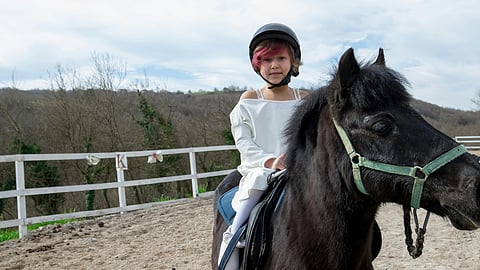Integrative therapies can greatly improve coordination, muscle tone, and movement. Hydrotherapy, for example, takes advantage of water's support and resistance to allow children to move more freely and safely. This turns difficult land exercises into fun, low-impact ones. The water's warmth itself is therapeutic to spastic muscles with effects lasting even after the session. Undergoing regular sessions over time can bring noticeable improvements in endurance and flexibility.
Equine therapy utilizes a horse's varied movements to boost mobility. It improves balance, builds core strength, and supports better posture. It also brings diversity and stimulation to conventional physical therapy. These settings enable children to practice movement, become strong, and gain physical independence. The variety of therapies keeps them motivated, enhancing long-term improvement. The horse's rhythmic motion is very similar to human walking patterns, and as such, it is a very distinctive and effective therapeutic movement.


